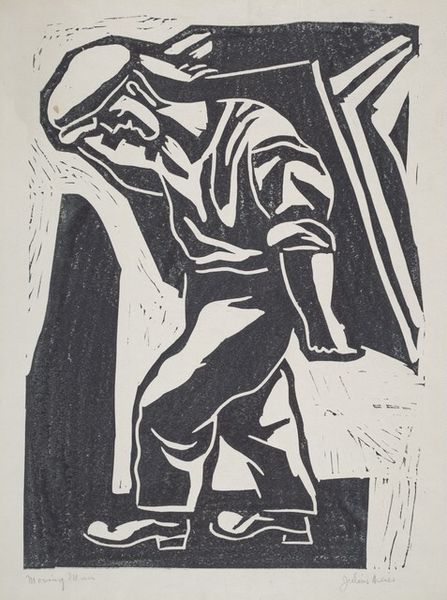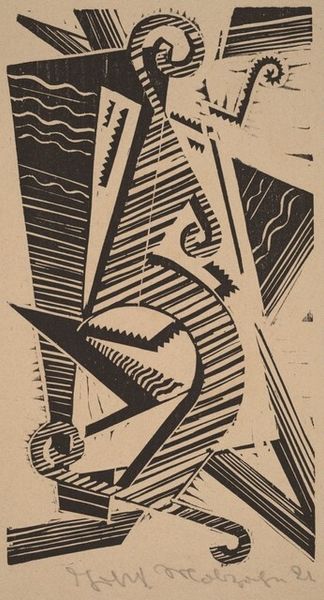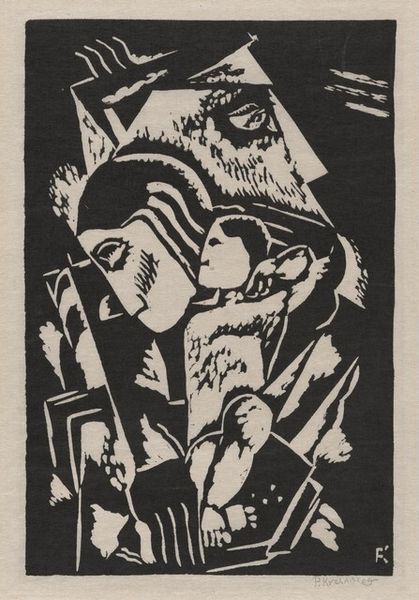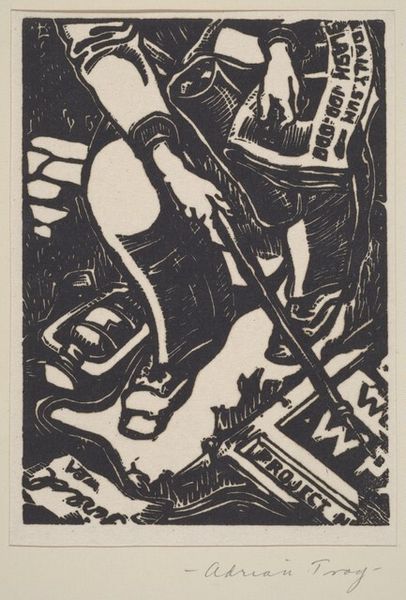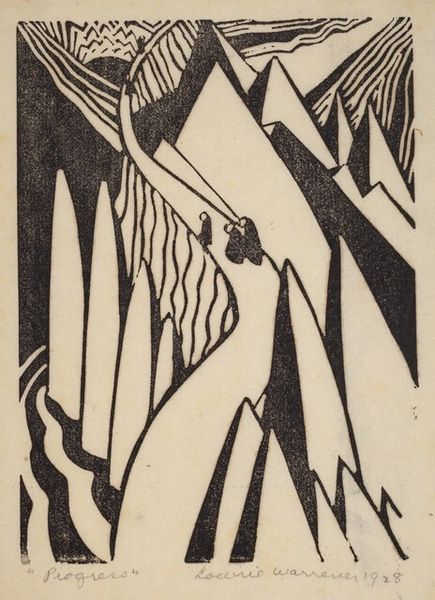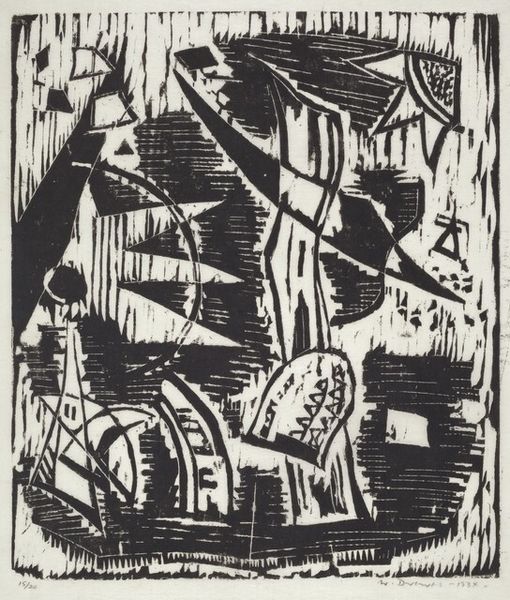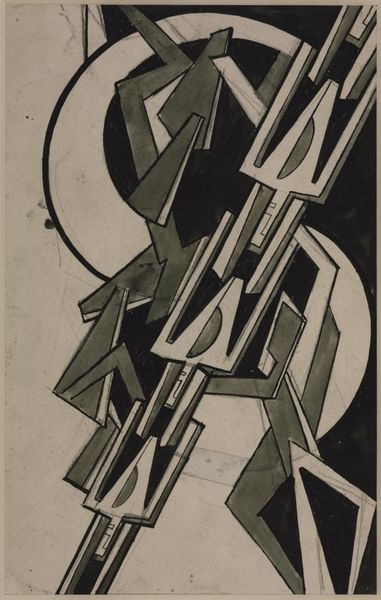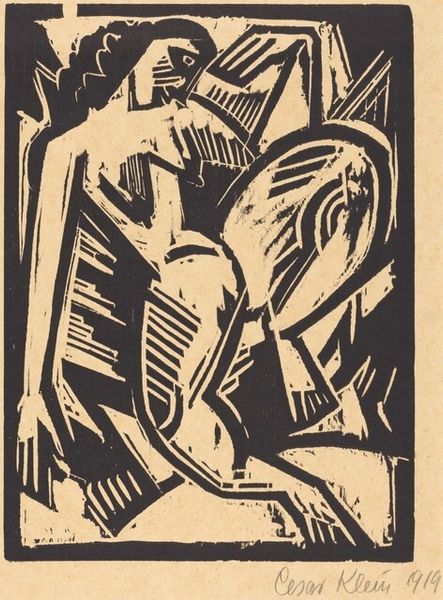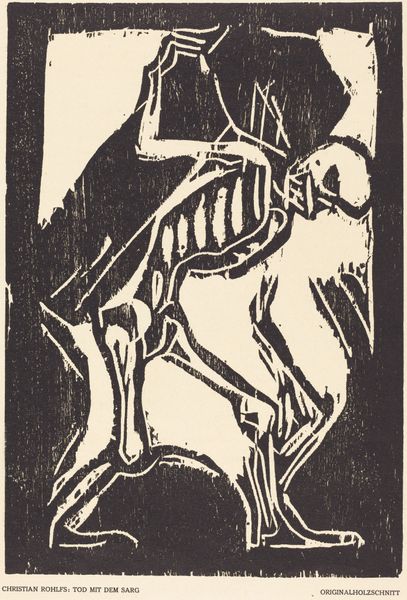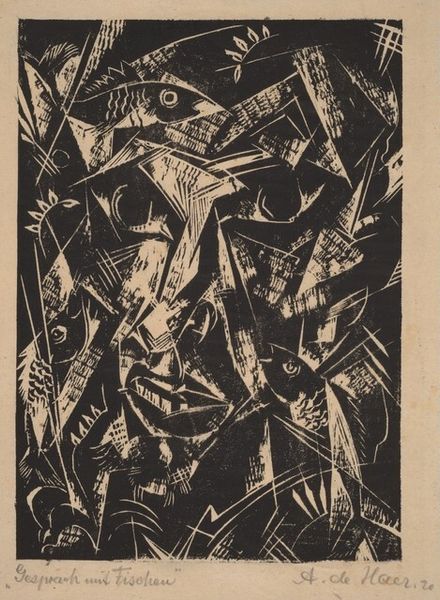
Dimensions: image: 356 x 146 mm sheet: 451 x 267 mm
Copyright: National Gallery of Art: CC0 1.0
Curator: Immediately striking, isn't it? Albert Potter created this arresting woodcut, "Supervalues," sometime between 1933 and 1936. The title seems... ironic, given its heavy atmosphere. Editor: Indeed. It's predominantly black and white, a study in contrasts that creates an immediate sense of... burden. The stark diagonals and geometric shapes add to this feeling of oppression, a certain visual weight. The lack of grayscale forces you to engage with its fundamental structure. Curator: I see the potential for multiple layers of interpretation. Consider the central figure laboring under what appears to be a large 'X'–is that symbolic? The setting feels urban, perhaps reflecting anxieties of the Depression era. Could this represent the toils of modern life? Editor: I agree with your initial instinct about the symbolism, but perhaps there's more there too. The 'X' can certainly point to the crucifixion, perhaps alluding to the trials inherent to faith and perseverance through economic hardship. We should also consider how it literally and visually bisects the cityscape behind him. Curator: Good point! Semiotically speaking, the figure carrying the X certainly calls to mind images of sacrifice, amplified by the jagged edges of the print. The chaotic arrangement in the background seems like an environment of struggle that this laborer has to navigate, a system without inherent value. The 'X' as a geometric device actually mirrors the buildings it divides! Editor: That contrast between organic struggle and constructed geometry creates compelling tension. The rigid lines of the city pressing against the individual... We've seen similar themes crop up around this time in film. Does this feel related to Metropolis? Curator: Perhaps…though I sense more expressionistic energy here than in Metropolis's sleek art deco aesthetic. Still, you are spot on in spotting those thematic links, those zeitgeists across various cultural texts. The city isn’t celebrated here. The image makes one question those “Supervalues," whatever they may be! Editor: It’s that very ambiguity, those potent yet unanswered symbolic equations that allows "Supervalues" to reverberate long after one has left this gallery. There's almost no limit to potential readings. Curator: Exactly, a perfect demonstration of an artwork generating multiple hypotheses from both structure and symbol. I will need some time to reflect and continue my research.
Comments
No comments
Be the first to comment and join the conversation on the ultimate creative platform.
